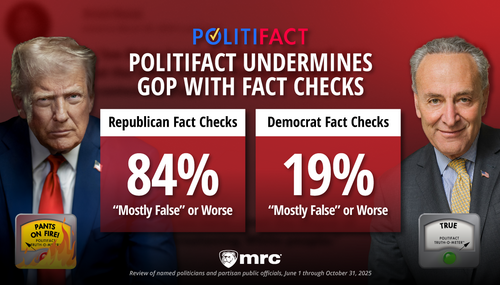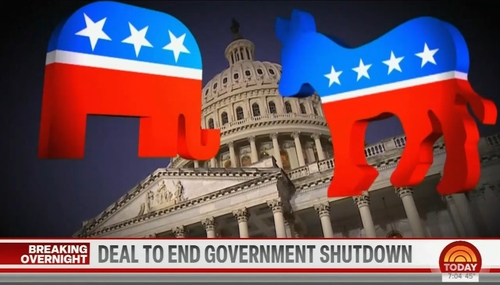
What Treasury did in April (2009) was to convert the TARP “investments” it began making in October in the country’s financial institutions, General Motors, Chrysler, and who knows what else to NPV (Net Present Value) accounting.
Mixing hundreds of billions of dollars of NPV into what has essentially been a cash flow report turns the Monthly Treasury Statement, and deficit reporting in general, into an exercise that will become not only become ever more difficult to comprehend, but one that will also be routinely subject to political manipulation.
One such political manipulation occurred in the March 2010 Monthly Treasury Statement that was released on Monday, and it involved NPV accounting (to be explained in a bit). While the Associated Press's Martin Crutsinger dutifully noted its existence, he deceptively described its meaning in his report's opening sentence, and in doing so played along with that manipulation (bold is mine):
The federal budget deficit for March showed a dramatic decline Monday because of a much lower estimate by the Obama administration of how much the financial bailout program will ultimately cost.
The Treasury Department said the March deficit totaled $65.4 billion. That compares with a $191.6 billion deficit a year ago. But $115 billion of the improvement was due to the administration's lower estimate of the cost of the Troubled Asset Relief Program.
"Dramatic"? That's a nice opening-paragraph newscast soundbite, Martin. But the result was achieved with a "melodramatic" bookkeeping entry.
Most of the general public believes that the government is reporting its results on a cash basis, i.e., that "receipts" means "money that came in" and that "outlays" means "disbursements." Until early last year, with one very small exception, that was the case.
But that's so pre-Obama. Since Treasury converted TARP and other bailout programs (with the exceptions of Fannie Mae and Freddie Mac) to Net Present Value accounting last year, this is how things roll:
- When the government "lends or invests" in banks and auto companies, the monies disbursed are treated as "investments," and are not included in "outlays."
- Assuming no impairment in value or collectability, there are no receipts when the original amounts "invested" are repaid. Interest or dividends received are treated as "receipts" (euphemistically called "transfers from the Federal Reserve" by our oh-so-transparent Treasury).
- But if it looks like some of the "invested" funds won't be repaid, the government will write down the value of those investments to what it thinks will be repaid.
- If it overestimates the impairment, it revalues its investments upward, and reduces reported "outlays." This is what happened in March, to the tune of $115 billion.
In essence what happened is that the administration pushed as much "bad news" (asset writedowns) as it could into last year's financial reporting, since last year was going to be a disaster no matter what. But since they overdid it with the writedowns last year ("Gosh, how did that happen?"), they can make this year look better than it really has been. Good old Martin played along by calling it "dramatic."
The reality is that the government spent almost $334 billion last month (the reported $219 billion plus the $115 billion non-cash NPV adjustment), and that spending in the following significant areas are up by 10% or more (from Page 3 of the Monthly Treasury Statement): Agriculture (up 12% and $7.7 billion), Education (up 58%, an increase of $19.7 billion), HHS (up 10%, or $37.9 billion), Labor (up 63%, or $35 billion), Transportation (up 13%, or $4 billion), interest (up 20%, or $33 billion), and Veterans (up 17%, or $8 billion).
Meanwhile, here are a couple of spending reductions that may not be getting enough attention: Homeland Security (down 19%, a decrease of $5.3 billion) and "Other Defense Civil Programs" (down 15%, or $4.8 billion). Cutting back spending is one thing; cutting preparedness is quite another. Which one is happening?
Maybe Martin Crutsinger or someone else at AP might consider taking a look for something "dramatic" in those oh-so-predictable cuts.
Another piece of homework for AP: Is the reason why Fan and Fred aren't being handled on an NPV basis despite the fact that they're both worthless?
Cross-posted at BizzyBlog.com.




